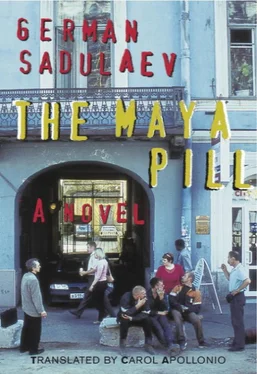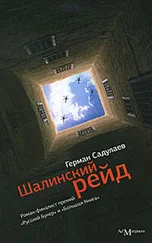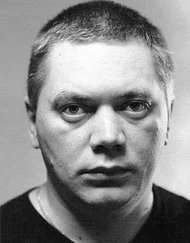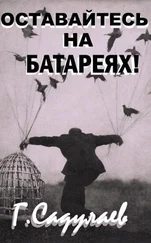Many years ago, when such products were still a rarity, a group of clever entrepreneurs involved in the food importing business realized the potential for growth in frozen food and poured all their energy and resources into that sector. Demand grew with every passing year, and along with it the business of the Cold Plus Corporation. Now, practically everything we eat is frozen and freezing is the most widespread means of preserving the nutritional quality of food over time. The company’s owners are now known as pioneers in the industry and are enjoying the well-deserved fruits of their bold initiative.
Cold Plus is a success story, the kind of thing you read about in glossy magazines aimed at a yuppie readership, but consumed mostly by mid-level managers like me, and students, who take it as an inspirational example of the kind of success they can aspire to in their future careers.
In principle it’s a true story—though a few details are missing. And as we know, the devil’s in the details.
A more complete reconstruction of the company’s “success story” would go as follows:
At the very beginning of the glorious, fabulous, and romantic ’90s, a group of Young Communists occupying leadership positions in the City Committee of the Komsomol followed the example of the Communist Party itself, which, according to a slogan posted in the halls of the City Committee Headquarters, was the Committee’s helmsman, and steered the conversion of the economy to market principles, plunging fearlessly into the abyss of capitalism.
This period in post-Soviet history is called, to borrow Marxist terminology, the epoch of “primitive capital accumulation.” Here the distinctions between good and evil get murky. For some, the phrase summons up visions of the Wild West: gold prospectors, adventurers, prostitutes, hucksters, and reckless cowboys. But in Russia’s case, there wasn’t much romance to it. Anyone who tells you otherwise is selling you a fantasy.
You see, the epoch of “primitive capital accumulation” in Russia and throughout the Soviet Union actually comprised the years of collectivization and industrialization, and the subsequent construction of “advanced socialism.” During this period, capital was accumulated by means of cruel exploitation of the population and the confiscation not only of surplus goods, but necessities too; resources were concentrated in the offices of the bureaucracy and the Party machine, where they underwent processing into the ideal form for use by the country’s future leaders. By the time the ’90s came along, the only thing left to do was divvy up all that accumulated capital. And this task fell to the self-proclaimed red-carpet cowboys, the movers and shakers on the seats of power.
But let us return to our city Komsomol Committee. One of the country’s first commercial banks, Bee Trust, was founded through the patronage of the Komsomol, and with the direct participation of its leaders. There was no need to spend centuries accumulating money, collecting it from thousands of individual depositors, as had been the case in old, backward Europe. Money was decanted directly from the city budget into this private bank in exchange for an utterly mundane transfer of a specified percentage of said funds back into the hands of the budget administrators in the form of hard currency. The same old gang of Party, Komsomol, and administrative functionaries retained their old positions, now “serving” in a new capacity.
After the liberalization of foreign trade, special structures were established under the bank’s supervision to manage import operations. Purchases were covered by what still passed as government funds, transferred to the bank from the state budget; the revenue from sales within the country, though, following the age-old rules of the game, became the personal capital of those who had established the business.
Initially, the budding Komsomol capitalists indiscriminately bought up everything they could abroad, paying whatever price they were asked. In those days, even the rank and file involved in these deals on the Russian side could become millionaires after a mere month on the job through the unofficial commissions they received from foreign contractors for deals they signed on behalf of the government at exorbitant prices and with crushing terms.
The leadership cast a blind eye on the growing prosperity of their junior partners; they weren’t doing so badly themselves, after all. Economically, the deals had absolutely no significance. All of the expenses were written off the accounts of Bee Trust, and the profits went directly into the owners’ pockets.
The Bee Trust group’s business realized the eternal dream of farmers everywhere: The two halves of the chicken, the part that consumed resources and the part that provided profit, were kept separate. The front part of the chicken, the part that needed to be fed, remained entirely in the government’s chicken coop, whereas the back part, the part that laid the golden eggs, was privatized by Komsomol chicken farmers.
But all good things come to an end. The dolce vita of the Bee Trust bank ground to an abrupt halt on the day the Russian state declared bankruptcy. In addition to financing imports and buying up real estate, the Komsomol bankers had also gotten involved (excessively, it turned out) with securities. These securities primarily took the form of notorious short-term government bonds. Essentially, their purpose was to serve as an instrument whereby the state could attract funds to cover the ever-present budget deficit. Given the high and unpredictable levels of inflation at that time, these funds were obtained at unprecedented high interest rates.
Bee Trust, like many other banks, acquired these bonds by taking out subsidized loans from the government-owned Central Bank. They obtained them at an artificially low interest rate, then turned around and basically sold them back to the Russian government, but at a much higher rate. In this way, the Russian state issued credit and then covered that same credit by paying private banks for it.
The delta of this inspired operation allowed Bee Trust to increase its assets and to live high on the hog. The bank’s offices occupied a five-story building in the historical city center, a palace that had originally belonged to some prince or count. Immediately after it acquired the building, the bank hired a Finnish company to completely overhaul and remodel it in the European style. The aged gilding and eighteenth-century plaster moldings were knocked down, the mosaics and frescoes were scraped from the walls, and the decorative columns, crowned with sculptures of ancient heroes and divinities, were dismantled.
Four laid-off museum employees joined forces with a schoolteacher and formed a picket line outside the building to protest the destruction of a monument of historical and cultural value. The demonstrators spread out some pages from the newspaper Pravda on the concrete foundation of the palace fence and set out a bottle of vodka, a can of sprats in tomato sauce, and some spiced smelt and black bread. The protest went on for well over two hours. The intrepid defenders of culture invoked the memory of the palace’s Italian architect and its original owner, a high-ranking general and patron of the arts, a nobleman, and, as legend would have it, a descendent of Khazar royalty. Periodically they would shout out a slogan, demanding that respect be shown to the cultural treasures within. They then turned to one another and indulged in effusive outbursts of mutual esteem.
The protest came to a halt when the bank’s security system summoned the local militia, who proceeded to bundle the exhausted resistance fighters into a Kozel van and truck them off somewhere—most likely to be tortured in some windowless chamber.
Читать дальше












